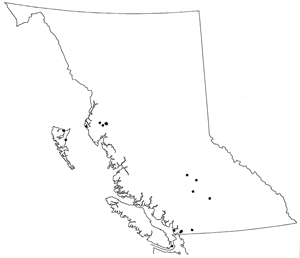This is an introduced European species of earthworm. Reynolds (1977) provides the following description: “Length 30-70 mm, diameter 3-5 mm, segment number 80-138, prostomium epilobic, first dorsal pore 4/5. Clitellum xxviii, xxix-xxxvii. Tubercula pubertatis small sucker-like discs on xxxi, xxxiii and xxxv. Setae closely paired, AA>BC, DD = 1/2 C anteriorly, and DD <1/2 C posteriorly. Setae c and d on x often on white genital tumescences. Males pores in xv with large elevated glandular papillae extending over xiv and xvi. Seminal vesicles, four pairs in 9-12. Spermathacae, three pairs opening on level cd in 8/9, 9/10 and 10/11. Colour variable, frequently green but sometimes yellow, pink or grey. Body cylindrical.”
Source: Reynolds, John W. 1977. The Earthworms (Lumbricidae and Sparganophilidae) of Ontario. Life Science Miscellaneous Publications, Royal Ontario Musuem, Toronto, with permission.
Allolobophora chlorotica (Savigny, 1826)
Earthworm; Green Worm
Family: Lumbricidae
Earthworm; Green Worm
Family: Lumbricidae
Map

Distribution of Allolobophora chlorotica in British Columbia.
(Click on the map to view a larger version.)
Source: Marshall and Fender (2007)
Introduction
|
Illustration
Click on the image(s) below to view an expanded illustration for this taxon.

Illustration Source: Reynolds, John W. 1977. The Earthworms (Lumbricidae and Sparganophilidae) of Ontario. Life Science Miscellaneous Publications, Royal Ontario Museum, Toronto.
Species Information
Biology
|
Habitat
|
Distribution
|
Status Information
BC Ministry of Environment: BC Species and Ecosystems Explorer--the authoritative source for conservation information in British Columbia. |